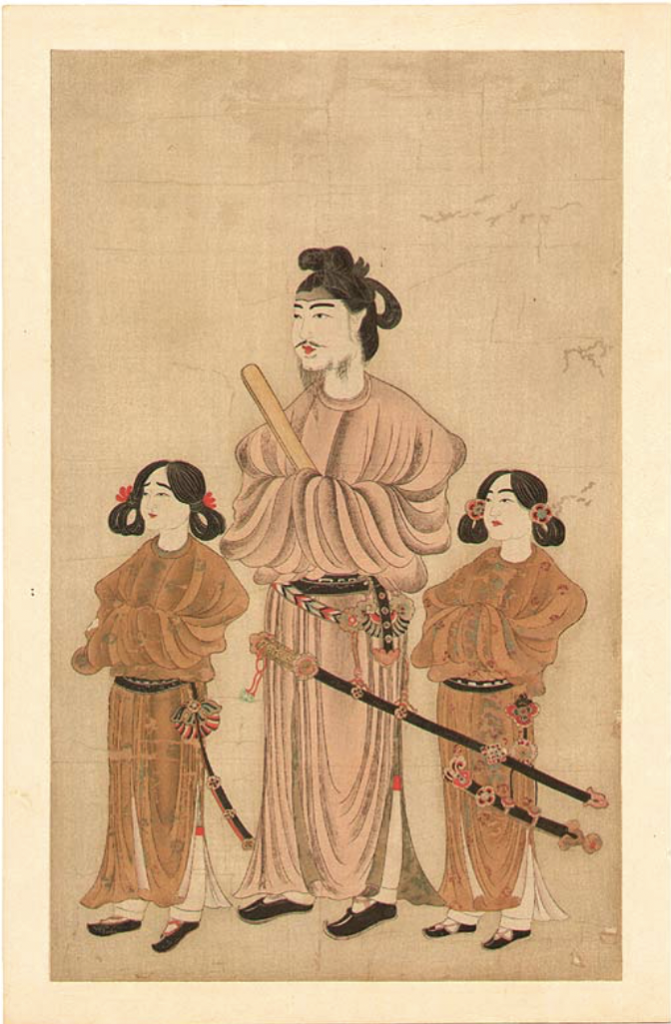
Option 1 Exploration pack
This week we learned about some ways the Japanese people centralized their government and eventually formed their state. The process took place between the sixth and seventh centuries. This period is marked with the transition between the Kofun period (250 CE – 600 CE) and a period from 552 CE and 710 CE known as the Age of Reform. The transition to the Age of Reform is important because people start to see the beginnings of the culture of Japan. Did the culture of Japan change because of the laws and reforms being put into place or did the reforms and laws change based on the culture at that time?
Additionally, during this time a new ruling clan stepped into power known as the Yamato confederacy. The Yamato confederacy constructed the first Japanese state that was centralized. The Yamato went about making the state by using Chinese based laws, which were called the ritsuryō in Japanese 1. Political reform was further accelerated and altered based on many factors including Buddhism being adopted in the middle of the sixth century and the rising of the Soga clan due to revenue from the courts, intermediaries for immigrants such as craftsmen and scholars, political marriage into the royal family, and lastly the divide of the nation due to Buddhism’s spread into the state. However, I do wonder why the ruler at the time did not try to stop the spread of Buddhism if he saw that a divide was occuring between the clan?
Furthermore, since the Yamato confederacy was a new centralized state, they were pressed with economic and social issues. As such, many policies put into place were made out of necessity. Many of these policies were a natural course of events since emigrants brought many things such as writing, metalworking, and more from the Korean peninsula. Thus, the Yamato confederacy took many of their policies. In fact, since the early sixth century, the diplomatic trade between the Japanese and Korean courts furthered the transfer of knowledge between them. Many things were brought over to Japan that would influence their reforms even more such as Confucian scholars, diviners, physicians, and more 2. However, nothing will have more of an impact on the laws than Confucianism when Prince Shōtoku came to power.
Prince Shōtoku is known to have passed major political reforms during his time, such as in 603 CE he implemented the first merit-based court ranks. He also wrote the Seventeen Articles in 604 CE. These articles were used to promote a Chinese based state system for Japan. Prince Shōtoku wrote these articles with the ideals of Confucianism in mind. For example, the editor of the article says, “The fact that most of these principles are stated in very general terms reflects the characteristic outlook of Confucianism: the ruler should offer his people moral guidance and instruction, not burden them with detailed laws involving compulsion rather than eliciting cooperation 3.” This quote details what the core principles of Confucianism are. As such, it shows how a ruler should act and change their kingdom to better reflect these beliefs. For example, “Harmony is to be valued, and contentiousness avoided.” is the first article Prince Shōtoku makes 4. These articles are general and not specifically referring to one thing, they are almost a way of life, but these articles like the Soga and the Yamato before them are just another reform trying to better help the people and stabilize their rule.
Bibliography
Fuqua, Douglas. “10. Centralization and State Formation in Sixth and Seventh-Century Japan.”
In Japan Emerging: Premodern History to 1850, edited by Karl F. Friday. New York, NY: Routledge, 2018. https://muhlenberg.on.worldcat.org/oclc/787849954.
“The Seventeen Article Constitution of Prince Shōtoku”. (from: de Bary, William Th. ed.
Sources of Japanese Tradition, Volume One: From Earliest Times to 1600. 2nd edition. New York: Columbia University Press, 2002) (PDF)
- Fuqua, Douglas. “10. Centralization and State Formation in Sixth and Seventh-Century Japan.”
- Fuqua, Douglas, 10. Centralization and State Formation in Sixth and Seventh-Century Japan, 99
- “The Seventeen Article Constitution of Prince Shōtoku”. (from: de Bary, William Th. ed. Sources of Japanese Tradition, Volume One: From Earliest Times to 1600. 2nd edition. New York: Columbia University Press, 2002) (PDF)
- De Bary, William, The Seventeen Article Constitution of Prince Shōtoku, 51
Leave a Reply